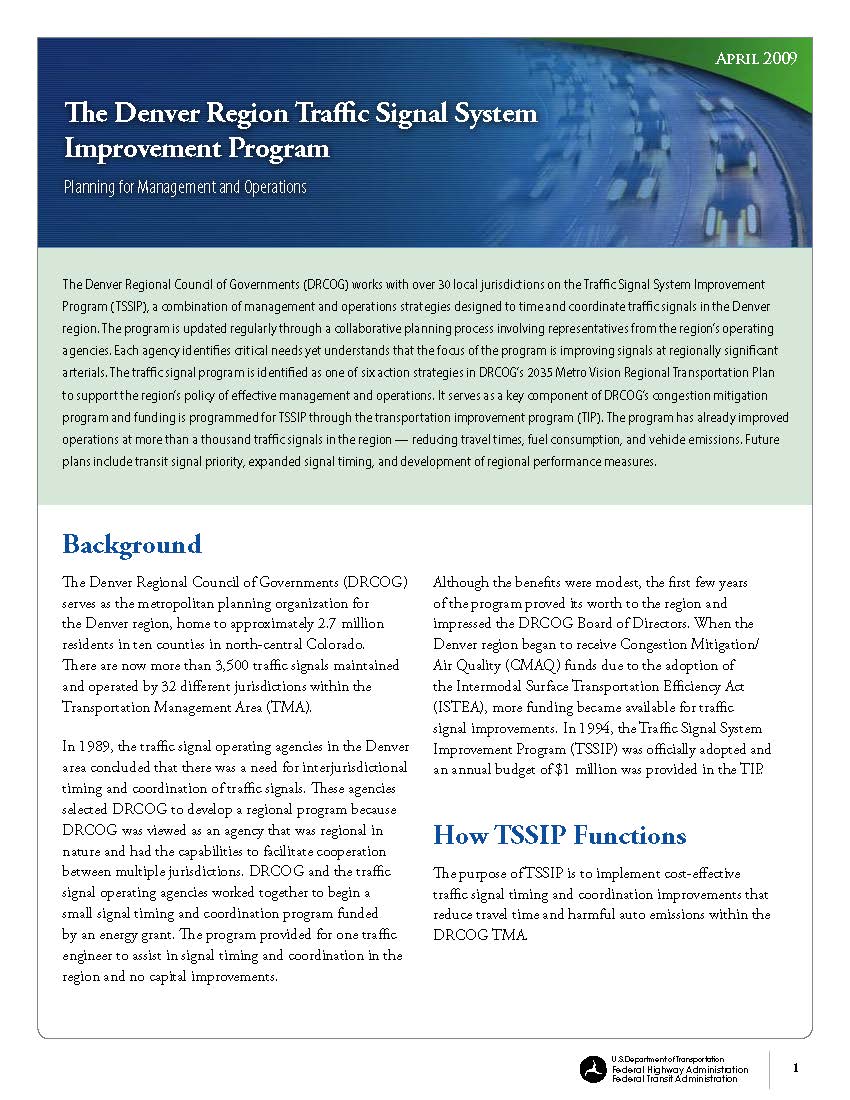Overview
 A strategic approach to planning for operations that is guided by specific objectives and regular performance measurement will help ensure that the most effective operations strategies are incorporated into transportation plans. In many regions around the country, agencies are already applying elements of this approach in a variety of ways. This case study is just one example of where this is being done.
A strategic approach to planning for operations that is guided by specific objectives and regular performance measurement will help ensure that the most effective operations strategies are incorporated into transportation plans. In many regions around the country, agencies are already applying elements of this approach in a variety of ways. This case study is just one example of where this is being done.
The Denver Regional Council of Governments (DRCOG) works with over 30 local jurisdictions on the Traffic Signal System Improvement Program (TSSIP), a combination of management and operations strategies designed to time and coordinate traffic signals in the Denver region. The program is updated regularly through a collaborative planning process involving representatives from the region's operating agencies. Each agency identifies critical needs yet understands that the focus of the program is improving signals at regionally significant arterials. The traffic signal program is identified as one of six action strategies in DRCOG's 2035 Metro Vision Regional Transportation Plan to support the region's policy of effective management and operations. It serves as a key component of DRCOG's congestion mitigation program and funding is programmed for TSSIP through the transportation improvement program (TIP). The program has already improved operations at more than a thousand traffic signals in the region — reducing travel times, fuel consumption, and vehicle emissions. Future plans include transit signal priority, expanded signal timing, and development of regional performance measures.